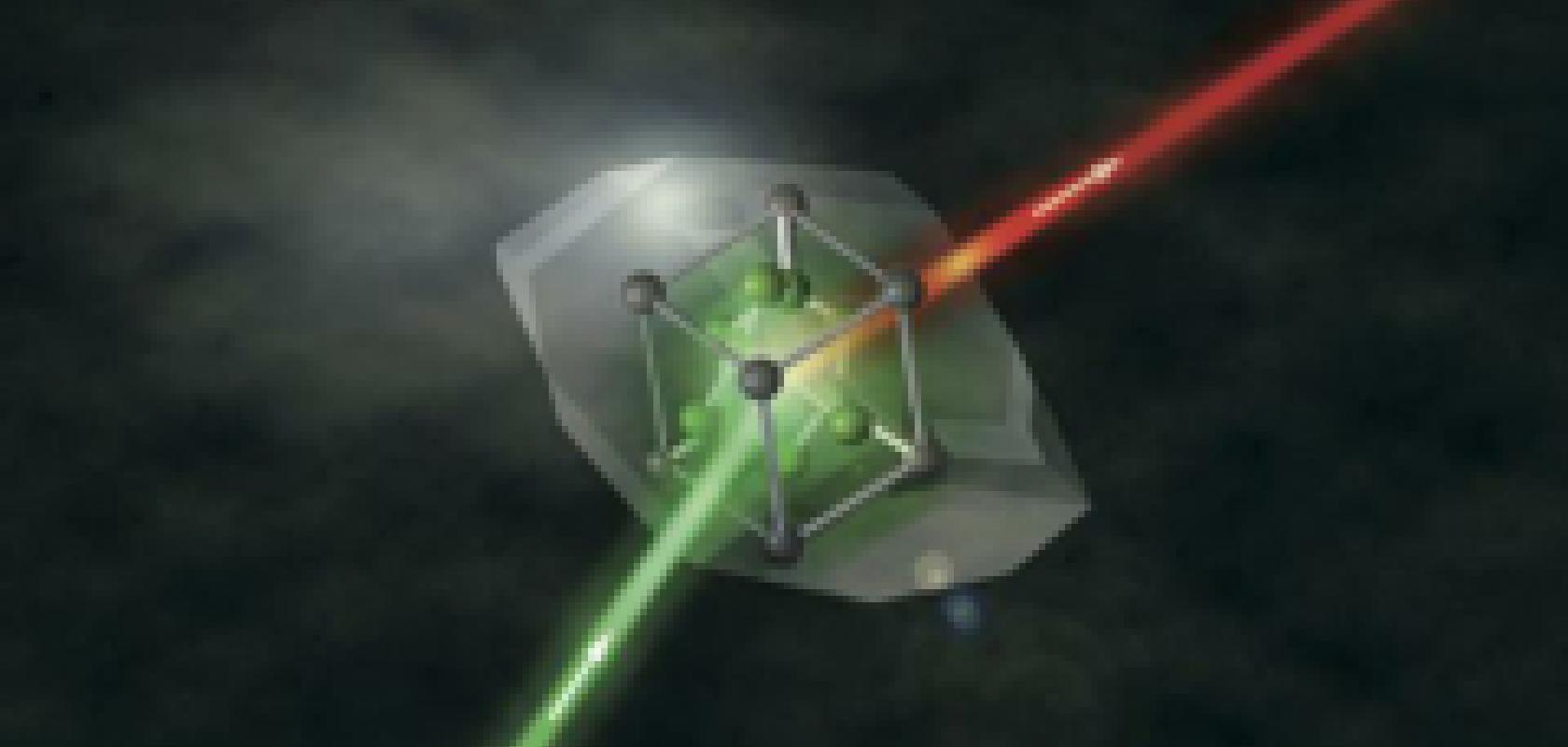Researchers say they have created an X-ray laser based on a solid for the first time. The method developed at DESY's free-electron laser FLASH opens up new avenues of investigation in materials research, as reported by the team of Professor Alexander Föhlisch of the Helmholtz Zentrum Berlin (HZB) in the journal Nature.
'This technology makes it possible to analyse sensitive samples that otherwise are quickly destroyed by intense X-ray light,' notes co-author Professor Wilfried Wurth of the University of Hamburg and the Hamburg Center for Free-Electron Laser Science (CFEL), a collaborative effort by DESY, the Max Planck Society and the University of Hamburg.
The incoming laser light excites the atoms in the silicon crystal to produce its own laser pulse with a slightly longer wavelength.
Unlike laser diodes in home DVD players, it has thus far not been possible to build X-ray lasers as compact devices based on a solid. For one thing, the energy needed to excite the laser medium is too high. In addition, the excitation must be of such a high intensity that it cannot be implemented in a compact device. For this reason, X-ray lasers are normally large pieces of equipment that are fed by a particle accelerator.
The high-energy electrons from the accelerator, at nearly the speed of light, are sent by powerful magnets down a tightly packed slalom course, emitting X-ray flashes at every curve which add up to a laser-like light pulse. This is known as the 'free-electron laser' (FEL) principle.
The researchers used DESY’s free-electron laser FLASH to excite a silicon crystal to emit X-ray radiation. The high energy of the FLASH pulses is enough to knock a relatively tightly bound electron out of the electron shell of each of the silicon atoms, with the atoms thereby becoming ionised. Shortly thereafter, this hole is filled by a less strongly bound electron, which changes to a lower-energy state. The energy released by this step is, in principle, large enough to generate a small X-ray flash.
Only infrequently, though, does it get emitted as (X-ray) light; for the most part it is passed on to another electron which, because of this impact, gets catapulted out of the atomic shell. At such high energies, this 'Auger process' is a lot more frequent than the emission of a radiation flash, making it virtually impossible to implement a conventional laser in the X-ray area. If intense X-ray pulses are used in materials investigation, the produced electrons greatly heat up the sample, quickly destroying it.


